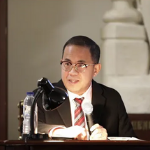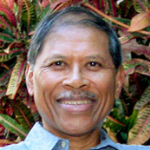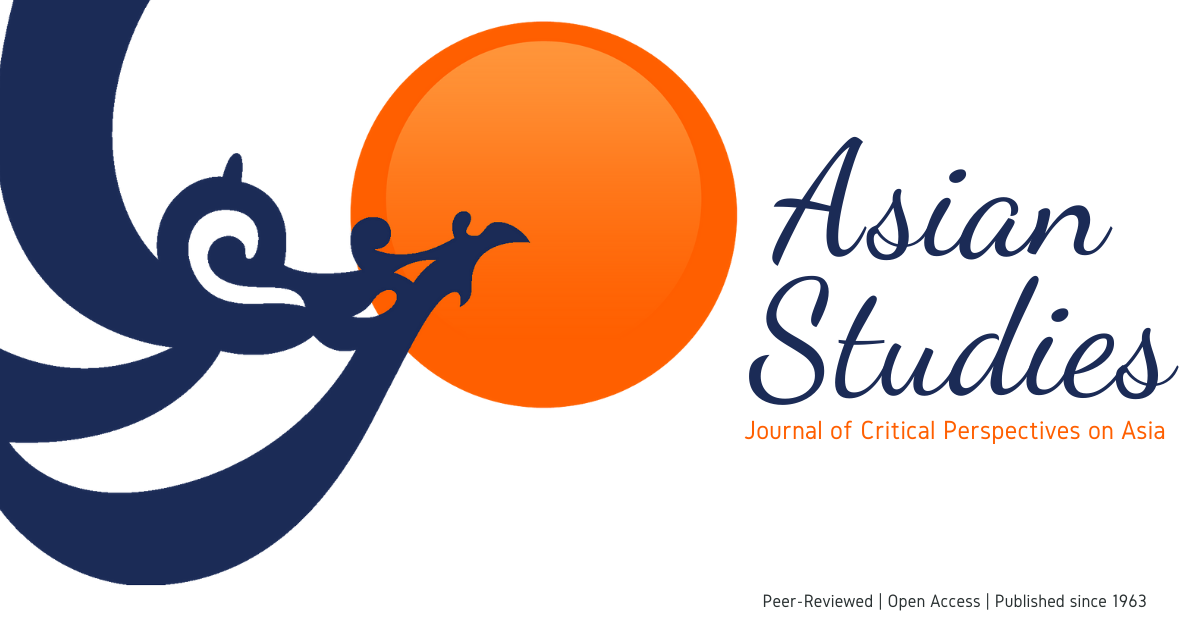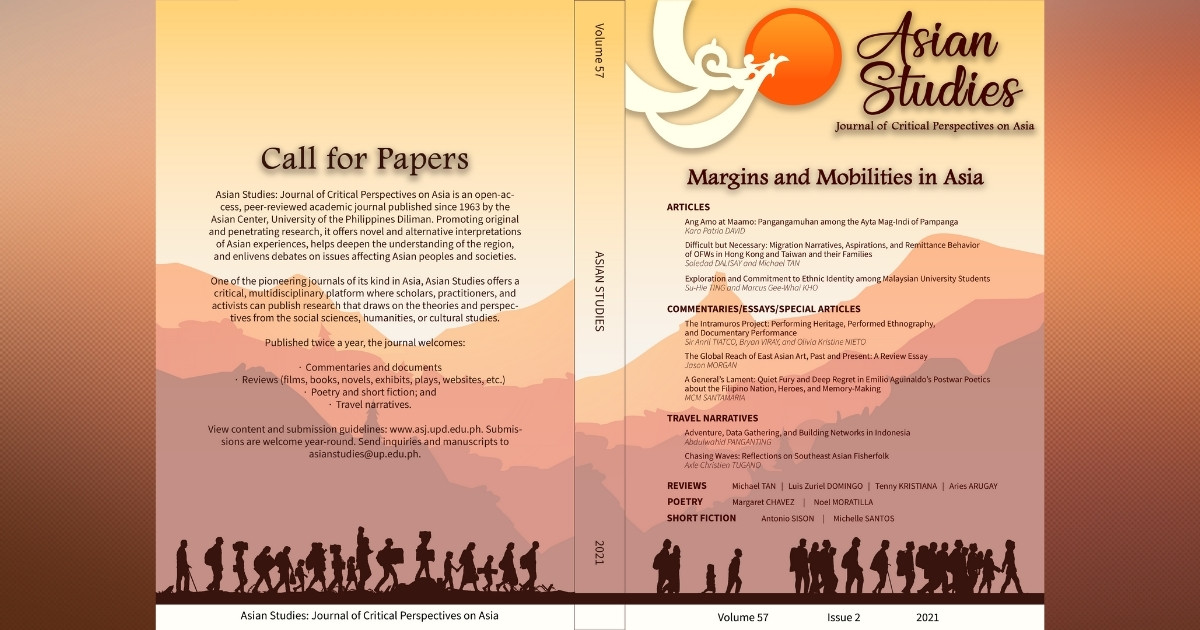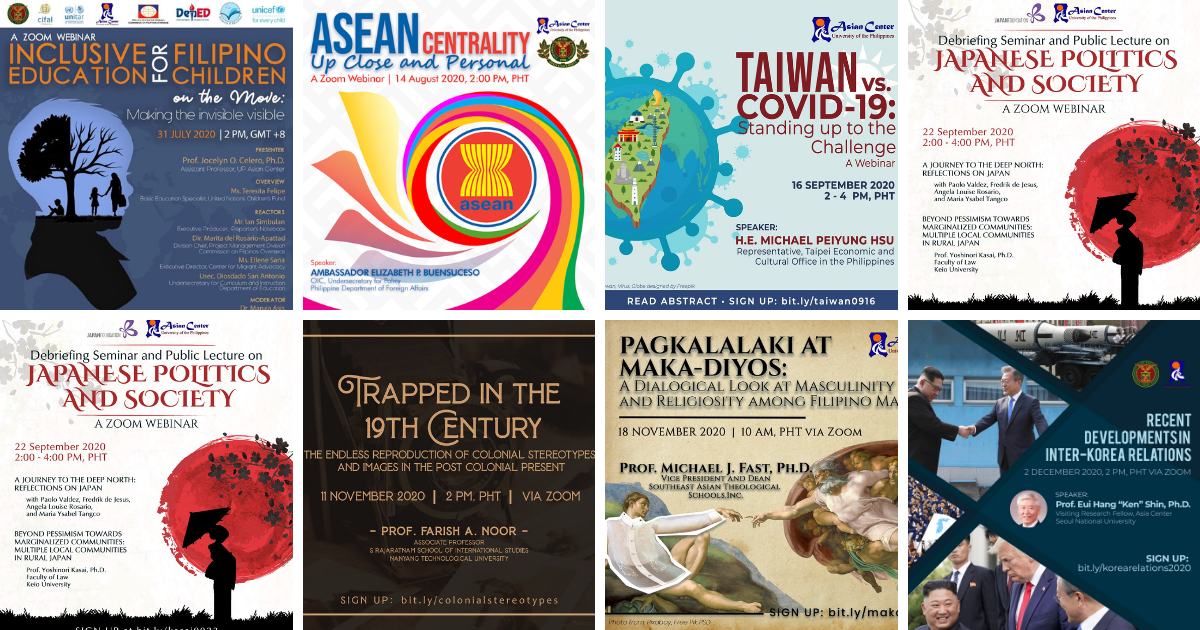The Asian Center, University of the Philippines Diliman will hold an international conference, "Sabang: Early Southeast Asian-European Intercultural Encounters," which will be held—via Zoom—from 18 to 20 March 2021. Times below are Philippine Standard Time (GMT + 8). You may view the program and book of abstracts. Program subject to change without immediate notice. Please check "Updates" tab.
-
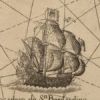
UPDATES
Program and Book of Abstracts uploaded; see Mar 18, 19, 20 tabs (3/18/2021)
Updated Wonder Guide (3/17/2021)
Q&A system and tab, and Wonder tab added (3/16/2021)
New start time for 18 March 2021: 09:00 am (3/11/2021)
New schedule for Day 1, Keynote: 09:15 am–09:45 am (3/11/2021)
Day 1 Keynote: No Q&A session (3/11/2021)
WITHDRAWALS
Day 2, Panel 5: The Meaning Behind the Action: Study on Teungku Syik Kuta Karang Hand Writing Living in Colonial Era (3/5/2021)
Day 3, Panel 8: Colonized Blood Covenants: Ritualized Friendship...... (3/19/2021)
-

MARCH 18: PROGRAM
Click/unclick on the tabs to view/close the content. Multiple tabs can be open at the same time.
Click on the titles to pop up the abstracts. View PDF of Program and Book of Abstracts.
09:00 am • Opening Program
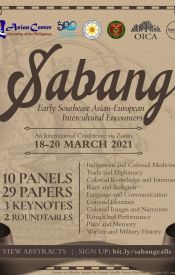
9:00 am–9:15 am
OPENING PROGRAM
National Anthem of the Philippines
Welcome Remarks
Fidel Nemenzo, DSc, Chancellor, University of the Philippines Diliman
Cecilia de la Paz, PhD, Director, Office for the Initiatives of Culture and the Arts, University of the Philippines Diliman
Joefe B. Santarita, PhD, Dean and Professor, Asian Center, University of the Philippines Diliman
House Rules and Conference Guidelines
09:15 am • Keynote 1: Southeast Asia and the Quincentennial Commemoration of the First Circumnavigation of the World
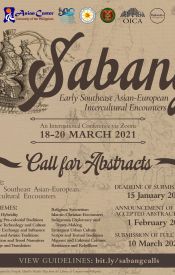
9:15 am–9:45 am
KEYNOTE LECTURE
Southeast Asia and the Quincentennial Commemoration of the First Circumnavigation of the World
Dr. Rene R. Escalante, Chair, National Historical Commission of the Philippines
09:45 am • Panel 1: Indigenous and Colonial Medicine

09:45 am–11:15 am
PANEL 1: INDIGENOUS and COLONIAL MEDICINE
Traditional Medicine in the Philippines and Early Southeast Asian-European Encounters
Michael L. Tan, University of the Philippines Diliman • Watch on YouTube
The Hilot of the Philippines and the Dukun Bayi of Indonesia Compared
Ma. Luisa T. Camagay, Department of History, University of the Philippines Diliman • Watch on YouTube
MSS 2996: Curiosity to A Medicinal Chest?
Mohd Affendi B. Mohd Shafri, International Islamic University Malaysia • Watch on YouTube
12:15 pm • Panel 2: Trade and Diplomacy

12:15 pm–1:45 pm
PANEL 2: TRADE AND DIPLOMACY
Addressing Southeast Asian Leadership: Diplomatic Narratives and the Ordering of Colonial Knowledge
Stephen L. Keck, Emirates Diplomatic Academy, UAE • Watch on YouTube
Friendship and Unity Among Us: The Dutch-Asian Elephant Diplomacy in the Seventeenth Century
Pichayapat Naisupap, Leiden University • Watch on YouTube
Danes in the Manila Trade, XVII-XIX Centuries
Andrés del Castillo Sánchez, El Colegio de México AC • Watch on YouTube
02:00 pm • Panel 3: Colonial Knowledge and Intermediaries
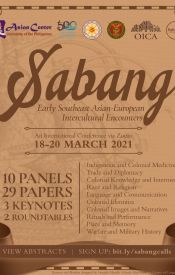
02:00 pm – 3:30 pm
PANEL 3: COLONIAL KNOWLEDGE AND INTERMEDIARIES
Re-reading 'Sucesos:' Revisiting Morga in Some Books, Texts, and Places
Rolando Talampas, University of the Philippines Diliman
Tensions of Hybridity: Native Officers as Intermediaries in Scripting Colonial Order in British Burma
Alexey Kirichenko, Institute of Asian and African Studies, Moscow State University • Watch on YouTube
Spanish Manila’s Media Anata: Groundwork for Quantitative Global Histories from Below, 1654–1687
Nicholas C. Sy, University of the Philippines Diliman
03:45 pm • Roundtable 1: History, Theories, and Prospects of Philippine Studies as a Discipline

3:45 pm–5:00 pm
ROUNDTABLE 1: History, Theories, and Prospects of Philippine Studies as a Discipline
Discussion Questions
-
What do you think is the relevance of Philippine Studies in the age of globalization, and how can we situate this relevance within the context of the ongoing global health emergency?
-
In this age of globalization, should we jettison theories, approaches, and paradigms which, rightly or wrongly, purportedly border on the essentialist and nativist problematizing of Philippine culture and society? How about foreign theories? Should they be abandoned in the name of indigeneity and nationalism?
-
What are the prospects for Philippine Studies in the digital era? What are the challenges?
-
Considering that Filipinos have become, by some accounts, a diasporic people, what is the importance of Philippine Studies with respect to Filipino migrant communities? What is the role of these migrant communities in promoting Philippine Studies?
-
How can Philippine Studies help promote inclusivity? Has it really helped address some of the social ills that have beset the country? How?
Participants
Filomeno Aguilar, Jr. PhD
Professor, Ateneo de Manila University, Philippines
Noel Christian Moratilla, PhD
Assistant Professor, Asian Center, University of the Philippines
Cristina Martinez-Juan, PhD
Executive Officer, Philippine Studies @ School of Oriental and African Studies (SOAS)
-

MARCH 19: PROGRAM
Click/unclick on the tabs to view/close the content. Multiple tabs can be open at the same time.
Click on the titles to pop up the abstracts. View PDF of Program and Book of Abstracts.
08:15 am • Keynote 2: The Successful ‘Portuguese’ Encounter with the Malay-Indonesian World of the 16th Century
8:15 am–9:30 am
KEYNOTE ADDRESS
The Successful ‘Portuguese’ Encounter with the Malay-Indonesian World of the 16th Century
Prof. Leonard Y. Andaya, University of Hawaii at Manoa
The encounter of the Portuguese with the Malay Indonesian world of the 16th century was characterized by the complementarity of both the “white” or European Portuguese and the “black” Portuguese or those who were of overwhelmingly local Asian descent. While the former provided the model for Portugueseness, it was the latter who succeeded in blending it with local cultures that were crucial to the success of the Portuguese enterprise. The ability of the black Portuguese to understand local perceptions of meaningful unities of bodies of water—what in the Philippines is captured in the indigenous term “sabang”—enabled the Portuguese to establish thriving international hybrid entrepots at Melaka on the Malay Peninsula, at Makassar on the southwest peninsula of Sulawesi (Celebes) and at Larantuka in eastern Indonesia in the 16th and into the 17th centuries.
Profile
Leonard Y. Andaya, PhD is Professor of Southeast Asian Historyat the University of Hawai' at Manoa. He has written on the early modern history of Malaysia, Indonesia, the southern Philippines, and southern Thailand. He is the co-author of "A History of Early Modern Southeast Asia, 1400–1830" (2015).
09:45 am • Panel 4: Race and Religion

9:45 am–11:15 am
PANEL 4: RACE and RELIGION
Chinos Indios as Sexual Deviants: Sodomy as Colonial Trope of Moral Panic in the Early Spanish Philippines
Thomas David F. Chaves, University of the Philippines Diliman • Watch on YouTube
Christianity and Racism in Post-colonial Society: White Jesus, Black Piet and Normalized Racism in Ambon, Indonesia
Hanry Harlen Tapotubun, Christian State Institution, Ambon, Indonesia
Religious Syncretism of Libad Apung Iru and the Kapampangan Pre-colonial Beliefs
James Darwin N. Lagman, Mabalacat City College, Philippines • Watch on YouTube
12:15 pm • Panel 5: Language and Communication

12:15 pm–1:45 pm
Panel 5: Language and Communication
The Meaning Behind the Action: Study on Teungku Syik Kuta Karang Hand Writing Living in Colonial Era
Dr. Fakhriati, Center for Research and Development on Religious Literature and Heritage (WITHDREW)
Zamboanga Chavacano from "Hawker Spanish" to "Slightly Spanish": The Trajectory of a Creole's Social Prestige
Jillian Loise Melchor and Dr. Miguel Blázquez, Erasmus Mundus MA Crossways in Cultural Narratives, Department of European Languages (UP Diliman)
In the (re/un)ma(r)king: Batuk (Philippine Traditional Tattoos) in the Diaspora
Lovey Ann F. Marquez, KU Leuven • Watch on YouTube
02:00 pm • Panel 6: Colonial Identities

2:00 pm–3:30 pm
PANEL 6: COLONIAL IDENTITIES
To Reward Her for This Devotion - Catholic Manipulation of the Conversion of Early-Modern Philippine Women
Steven J. Fluckiger, University of Hawai‘i at Mānoa
Melchor de Avalos and the Political Status of Tagalog Muslims
Isaac Donoso, University of Alicante, Spain • Watch on YouTube
The Imposition of the Sorbonne Method in the Formation of an Indigenous Clergy in South-East Asia: the Example of Siam in 1685
Maëlle Pennéguès, University Lumière Lyon II, France
03:45 pm • Roundtable 2: Locating Early Modern Southeast Asia

3:45 pm–5:00 pm
ROUNDTABLE 2: Locating Early Modern Southeast Asia
Discussion Questions
- Can you describe the regional and global connections made or unmade during the early modern period (c.1400-1800) in Southeast Asia? What do you think were the impact of European arrival to various states and societies in Southeast Asia during this period?
- Conversely, what do you think were the impact of early Southeast Asian-European interaction in the politics and societies in Europe, if at all?
- How important was the early period of Southeast Asian-European interaction to the later political trajectory of colonial and postcolonial states in the region?
- In your view, what are the themes, sources, approaches, geographic regions that remain frontiers for research on early modern Southeast Asia?
Participants
Joefe B. Santarita, PhD
Dean and Professor, Asian Center, University of the Philippines Diliman
Ariel C. Lopez, PhD
Assistant Professor, Asian Center, University of the Philippines Diliman
David Henley, PhD
Professor, Leiden University, Netherlands
Stefan Amirell, PhD
Professor, Linnaeus University, Sweden
-

MARCH 20: PROGRAM
Click/unclick on the tabs to view/close the content. Multiple tabs can be open at the same time.
Click on the titles to pop up the abstracts. View PDF of Program and Book of Abstracts.
08:15 am • Panel 7: Colonial Images and Narratives
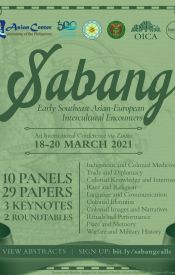
8:15 AM – 9:45 AM
PANEL 7: COLONIAL IMAGES AND NARRATIVES
Revisiting the Boxer Codex: How the Filipino “Indio” within Early Modern Colonial Encounters Uncovers the Construction of the Filipino Identity
Jessica Nicole R. Manuel, University of the Philippines Diliman • Watch on YouTube
The Mingling of Asian and European Art Traditions in the Boxer Codex Illustrations
Clio Kimberly R. Tantoco, University of the Philippines Diliman • Watch on YouTube
Búyo in the Narratives of Early Spanish-Austronesian Intercultural Encounters
Mark Anthony B. Cabigas, Samahan ng mga Mag-aaral ng Kasaysayan, Philippine Normal University • Watch on YouTube
10:00 am • Panel 8: Rituals and Performance
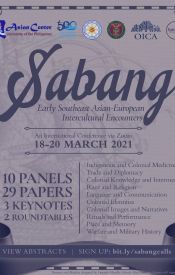
10:00 AM – 11:30 AM
PANEL 8: RITUALS AND PERFORMANCE
An Orosipon ni Ina: A Case for the Syncretic Origin of the Peñafrancia Festival in Bicol, Philippines
Al B. Rodriguez, Asian Center, UP Diliman
Colonizing Blood Covenants: Ritualized Friendship and Contractual Colonialism in Early Filipino-Spanish Encounters
Arthit Jiamrattanyoo, University of Washington (WITHDRAWAL)
Sayaw sa Ginunting: A Postcolonial Analysis of a Wedding Dance
Kyle Philip M. Ravena, University of the Philippines Diliman
12:30 pm • Panel 9: Place and Memory

12:30 pm–2:00 pm
PANEL 9: PLACE AND MEMORY
Indigeneity and Ethnicity of Suverna Bhumi (Burma): A View from Colonisers
Sumit Mondal, Central University of Gujarat and Sampayan Chakravarty, Delhi University
A Local View from Northeastern Taiwan to Understand Intercultural Encounters between Europe and Asia and their Indirect Effects
Li-Ying Wang, University of Washington
From Remembrance to Recreation: Memory of European Houses in Urban Landscape Manila (Philippines) and Saigon (Vietnam) during the Colonial Period
Nguyet Thi Minh Nguyen, Faculty of History, College of Social Sciences and Humanities, Vietnam National University
02:15 pm • Keynote 3: Shifting the entrepôt paradigm: Local Agents and Indigenous Voices in the Making of Manila’s Global Connections, ca. 16th-18th Century

2:15 pm–3:30 pm
KEYNOTE ADDRESS
Shifting the Entrepôt Paradigm: Local Agents and Indigenous Voices in the Making of Manila’s Global Connections, ca. 16th-18th Century
Dr. Birgit Tremml-Werner, Linnaeus University, Sweden
In recent decades, a rich body of scholarship has demonstrated that Manila was more than just a trans-shipment port. Studies on far-reaching intra-Asian, Austronesian, and trans-Pacific connections have posed a challenge to narratives of both galleon-centricity and irrational colonial governance. Yet, there continues to exist an overemphasis on actors and processes reaching the Philippines from abroad, while both indigenous agency and colonial policies are rendered secondary to the course of events. However, from the sixteenth century onwards, a long list of ‘connectors’ including among many others ‘mestizo de sangley’-interpreters, provincial parish priests, colonial officials, indigenous chiefs, localized foreign residents, indigenous allies, beatas, and Spanish women, were at the heart of local and global projects. Zooming in on such local agents opens up new vistas for a nuanced global history of a connected archipelago.
03:45 pm • Panel 10: Warfare and Military History

3:45 pm–5:15 pm
PANEL 10: WARFARE AND MILITARY HISTORY
Lantak: Ingenious Fire Making Device of Southeast Asia
Jeffrey James C. Ligero, University of the Philippines Los Baños
The Royal Artillery Foundry of Manila: Technical Labor and Global Circulation (1580–1676)
Eder A. Gallegos, Universidad Pablo de Olavide de Sevilla
The Extinct of Fortified Dwellings (Kotta/Kuta) in Southeast Kalimantan
Sunarningsih, Balai Arkeologi Kalimantan Selatan
-
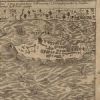
MEET OUR KEYNOTE SPEAKERS
March 18: Dr. Rene R. Escalante
Southeast Asia and the Quincentennial Commemoration of the First Circumnavigation of the World
Date and Time
0815 am, 18 March 2021 0915 am – 0945 am (No Q&A session)
Profile
Rene R. Escalante, PhD is the Executive Director of the National Quincentennial Committee, which aims to commemorate the 500th anniversary of the "Victory at Mactan (27 April 2021) and...of the Philippine part in the first circumnavigation of the world."
March 19: Dr. Leonard Andaya
The ‘Portuguese’ Encounter with the Malay-Indonesian World of the 16th Century
Date and Time
08:15 am, 19 March 2021
Abstract
The encounter of the Portuguese with the Malay Indonesian world of the 16th century was characterized by the complementarity of both the “white” or European Portuguese and the “black” Portuguese or those who were of overwhelmingly local Asian descent. While the former provided the model for Portugueseness, it was the latter who succeeded in blending it with local cultures that were crucial to the success of the Portuguese enterprise. The ability of the black Portuguese to understand local perceptions of meaningful unities of bodies of water—what in the Philippines is captured in the indigenous term “sabang”—enabled the Portuguese to establish thriving international hybrid entrepots at Melaka on the Malay Peninsula, at Makassar on the southwest peninsula of Sulawesi (Celebes) and at Larantuka in eastern Indonesia in the 16th and into the 17th centuries.
Profile
Leonard Y. Andaya, PhD is Professor of Southeast Asian Historyat the University of Hawai' at Manoa. He has written on the early modern history of Malaysia, Indonesia, the southern Philippines, and southern Thailand. He is the co-author of "A History of Early Modern Southeast Asia, 1400–1830" (2015)
March 20: Dr. Birgit Tremml-Werner
Shifting the Entrepot Paradigm: Local Agents and Indigenous Voices in the Making of Manila's Global Connections, ca. 16th to 18th Century
Time and Date
02:00 pm, 20 March 2021
Abstract
In recent decades, a rich body of scholarship has demonstrated that Manila was more than just a trans-shipment port. Studies on far-reaching intra-Asian, Austronesian, and trans-Pacific connections have posed a challenge to narratives of both galleon-centricity and irrational colonial governance. Yet, there continues to exist an overemphasis on actors and processes reaching the Philippines from abroad, while both indigenous agency and colonial policies are rendered secondary to the course of events. However, from the sixteenth century onwards, a long list of ‘connectors’ including among many others ‘mestizo de sangley’-interpreters, provincial parish priests, colonial officials, indigenous chiefs, localized foreign residents, indigenous allies, beatas, and Spanish women, were at the heart of local and global projects. Zooming in on such local agents opens up new vistas for a nuanced global history of a connected archipelago
Profile
Birgit Tremml-Werner is a lecturer at Linnaeus University in Sweden. She has a Mag. phil. and Dr. phil. degrees in History (with a minor in Japanese Studies) from the University of Vienna. She is the author of Spain, China, and Japan in Manila, 1571-1644: Local Comparisons, Global Connections (2015).
All photos were taken from each speaker's respective profile pages
-

REMINDERS for PRESENTERS
Please take time to go through these reminders to help ensure a smooth webinar experience for everyone. These may all be subject to change, so please check back regularly, by 17 March, and even during the conference, for updates here and/or via email.
Join Link and Sign-In
- Presenters DO NOT NEED to fill out the registration link above. That is only for the audience (non-presenters).
- Sometime before the conference, panelists will receive an email containing the link to join the webinar/conference as a panelist.** Please check your email's Spam folder. It is advised that you star this email or add it to your email's favorites to help you locate it easily. The sender is "Asian Center UPD" and the subject line is "Panelist for...."
- If you have not received your "Join Link" by 15 March, please inform the Conference Secretariat.
- Your join link is tied to your Zoom account, so it is unique/exclusive to you. Please don't share it with anyone else.
- Presenters must click the said link and just sign in to their Zoom account. To help ensure a smoother log-in experience, sign in to your Zoom account first before clicking on the link.
- The same "Join Link" will be used for the entire three-day session. There is no need to re-register.
**The conference secretariat will notify presenters if and when they should expect the Join link, and receive additional instructions. As with the audience, signing in to a Zoom account is required for panelists.
Q&A
Please consult the Q&A tab to read how the Q&A will proceed.
Call Time
Presenters must log in at least 30 minutes before their panel, though they may of course attend the other sessions. This early start can help you get settled and address any technical issue.
Renaming Your Zoom Profile
Sometime before the conference, please log in to the Zoom website, go to Profile, and click "Edit" to rename yourself thus: P1 Amy Peralta. P1 means Panel 1, and so on. This will help the conference team to identify you more easily and anytime during the webinar.
Introduction of Panelists
The moderators/ emcees will introduce each panelist before playing the recording of his/her presentation.
During the Presentations
The conference staff will play your pre-recorded presentation, but we do ask that you have it (both the file of presentation and the video) on hand and be ready to screen-share, just in case the conference staff encounters a technical difficulty. We hope it doesn't come to this, but you'll never know.
In-Webinar Communications Outside Zoom
We will use the Zoom chat feature as much as possible to send messages to all presenters, so kindly monitor the chat window as often as you can. However, the Chat window can sometimes get too crowded, and it may be difficult to backread.
Thus, please always be on the lookout for email announcements (to be sent to your Zoom email address). Also, you may also wish contact us via Facebook Messenger (https://www.facebook.com/upasiancenter) or via Google Hangout (This email address is being protected from spambots. You need JavaScript enabled to view it.) or just email the conference secretariat.
The conference team is also exploring online websites to facilitate in-webinar communications and interactions with the audience. Please expect updates soon.
Recording of the Webinar
The entire conference will be recorded.
-
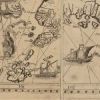
REMINDERS for the AUDIENCE
Please take time to go through these reminders to help ensure a smooth webinar experience for everyone. These may all be subject to change, so please check back regularly, by 17 March, and even during the conference, for updates here and/or via email.
For Non-Presenters (Audience)
- Please click on the registration button above. Registration is free.
- Upon registration, you will receive an email containing a link to join the conference. Please check your Spam folder if you don't see it in your main inbox. The sender should be "Asian Center UPD."
- Please do not share that link with anybody else; it is unique/exclusive to you.
- Signing in to at least a basic/free Zoom account is required to attend the conference. To help ensure a smoother log-in experience, sign in to your Zoom account first before clicking on the "Join link."
- The webinar can accommodate only 500 at any given time, so joining/participation is available on a first-come, first-served basis.
- Please keep comments and questions fair and professional from sending rude/derogatory comments or questions to the panelists/organizers. The organizers reserve the right to remove from the webinar participants who send rude/demeaning messages.
- The same "Join Link" sent to you can be used for all sessions even on a different days. There is no need to register again.
- Livestream may be initiated ONLY IF the participants exceed 500, so please register still.
Q&A System
See Q&A tab.
Recording Notice
The entire conference will be recorded.
-

Q&A Format
-
The audience can post—anonymously if they wish—their questions on the Q&A window of the Zoom webinar. They must indicate the speaker to whom they are addressing the question: "Dr. Jones, why do....." This will help everyone keep track.
-
During the Q&A, the moderator and/or the speakers will choose, read aloud, and answer on air any open question (s). However, the panelists/presenters are also free to type in their answers as soon as their presentations are completed.
-
Just before the first presentation of a panel ends, all remaining open questions will be dismissed. However, panelists-presenters have the option to reopen and respond to these questions during break time or until just before the first presentation of the next panel ends (see Item # 2). This, we hope, can help ensure that only questions for the current panel's Q&A are visible and thus easier to see/read through.
- Please minimize (extensive) discussions with the audience/panelists via the Zoom Chat window. (Only) if the panelists and/or wish to discuss things further and answer more questions, they can join the Wonder room. If you are taking part in post-panel discussions, the audience are instructed to send their questions via chat, and you can just read out answer the questions. Audio may be possible if there are few participants in the circle. See "Wonder" tab for link and guidelines.
- Kindly check back before, and even during the conference to see updates. Major updates will be announced during the conference.
-

On Wonder
The organizers chose Wonder to serve as an out-of-Zoom communications platform where the audience and/or the panelists can interact. Participation in Wonder is optional, and your use of the site is at your own risk. It is a third-party app that will require access to your microphone and/or camera. Kindly note that the University of the Philippines has no subscription to, and partnership with, Wonder.
You can turn off your mic and camera while inside Wonder, but should you participate, please block Wonder’s access to your microphone and camera after leaving Wonder. You can do this by going to the security settings of your browser. The UP Asian Center will not be liable for any untoward incidents that may arise from your use of Wonder.
If you agree to these terms, follow the guide below and click on the link at the bottom of this page.
Guide to Wonder
1. TURN OFF YOUR AUDIO and VIDEO in ZOOM AND OTHER APPS THAT USE YOUR MICROPHONE (or leave the Zoom and return later) WHILE INSIDE WONDER. At the same time, lower the volume of your computer, and slowly raise it to desired level. This helps prevent any feedback or loud noises if and when you enter Wonder and speak up.
2. Visit the Wonder Room (link below) and type password (to be provided here or via the Zoom chat). By joining, you agree to these terms.
3. Depending on your browser's settings, you may have to allow your browser to access to your microphone and/or camera (microphone access is required). Your browser may prompt these, but you may also see (struck-out) microphone and camera icons on the URL bar (i.e. where you type the website name). These icons are clickable and allow you to give or withhold access to your microphone and/or camera. If you disable your camera, you won't have a photo/image/screenshot (that's fine).
4. Type your name and click "Next." You may also upload a photo ONLY IF YOU WISH.
5. Follow any prompts for audio and video checks.
6. Answer the question, “What Would You Like to Chat About?” This can help you identify others with similar interests; your name and your answer will be visible if people "hover" the mouse/pointer on your avatar/circle.
Inside Wonder
1. TURN OFF YOUR AUDIO and VIDEO in ZOOM AND OTHER APPS THAT USE YOUR MICROPHONE (Or you may leave altogether and return to the webinar later on).
2. The audience and panelists are free to move around the sessions and/or join the circles or the Rooms. Use your mouse or arrow keys to drag/move around the rooms or to your preferred room, circle, or person. Click and hold to automatically drag the cursor to your preferred location.
3. Four “Rooms” (white faded squares) will be visible on your screen, corresponding to the speaker order in the program. Please move in and out of the rooms as necessary.
-
Panelist/Speaker 1
-
Panelist/Speaker 2
-
Panelist/Speaker 3
-
Just Hanging Out
Speaker 1, 2, 3 correspond to, and are reserved for, the panel that has just concluded. Presenters from previous panels may initiate a separate circle.
3. Once inside a room, you have to enter the circle (the first two participants must combine their circles to create a bigger circle for others to join in). The panelists may or may not be present in their corresponding room, in which case, the audience is free to discuss the paper amongst themselves (via Chat) or video/audio.
You may send your questions via Chat and the panelist can read them out. Audio is possible depending on the number of participants in the circle.
By joining a circle, you will see the video (if it's on) of the members of that circle. And you may also chat with them either as a circle or privately. In a circle, you have the option to turn on your cameras/mics.
4. To leave a circle, just drag yourself out of the said circle.
5. Please observe courtesy and respect at all times. Kindly do not interrupt ongoing conversations. Wonder is a public room, so please avoid sharing confidential/sensitive information. Everyone is free to approach one another.
6. You can zoom in/out to see the different rooms by click the +/- signs or scrolling your mouse. You can turn off your mic and camera while inside Wonder (Remember, your Zoom audio and video must be off while inside wonder). The controls are found the bottom of the Wonder room.
7. TURN OFF YOUR AUDIO and VIDEO in ZOOM AND OTHER APPS THAT USE YOUR MICROPHONE (Or you may leave Zoom altogether and return to the webinar later on.
After You Leave Wonder: Security Tip
1. Please block Wonder’s access to your microphone and camera each time after leaving Wonder. You can do this by going to the security settings of your browser.
If you accept these terms, please click on the link below. By clicking, you signify your acceptance and understanding of the foregoing terms. TURN OFF YOUR AUDIO and VIDEO in ZOOM AND OTHER APPS THAT USE YOUR MICROPHONE. Click the link below to join. Please message us in Zoom to get the password.
-
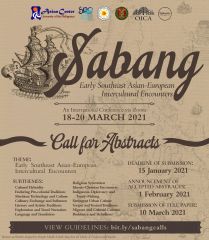
ABOUT THE CONFERENCE
The word “Sabang” in Visayan and several other Philippine languages refers to the juncture of bodies of water; it encapsulates the meeting of cultures and the centrality of the Philippines in Southeast Asia-Europe exchanges. "Sabang: Early Southeast Asian-European Intercultural Encounters" aims to discuss the varied cultural legacies of this encounter.
While the conference’s inspiration draws primarily from the Philippine-Spanish experience, it also seeks presentations on and from neighboring Southeast Asian countries that:
-
Highlight similarities and differences with the Philippine experience
-
Employ inter- and trans-disciplinary approaches to understand cultural exchange and hybridity

RATIONALE
The Philippines’ entanglement with Hispanic and Hispanicized cultures from the sixteenth century facilitated the flow and exhange of goods and ideas to and from Asia, on the one hand and the Americas and Europe, on the other. The Philippines, Manila in particular, played a crucial role not only as an important trans-shipment point for American silver, Chinese porcelain, textiles, and other products, but also as a melting pot of cultures. The 500th anniversary of the Philippine-Spanish encounter provides an opportune moment to analyze and reflect on the vaunted yet largely understudied intercultural encounters between Europe and Asia.

ORGANIZERS
- Asian Center, University of the Philippines Diliman
- National Historical Commission of the Philippines
- Office of the Initiative for Culture and the Arts, University of the Philippines Diliman
CONFERENCE CHAIRS
- Ariel Lopez, PhD, Assistant Professor, Asian Center, University of the Philippines Diliman
- Noel Christian Moratilla, PhD, Assistant Professor, Asian Center, University of the Philippines Diliman
-

CONTACT: HOW CAN WE HELP YOU?
Please direct all inquiries to the Conference Secretariat via email: This email address is being protected from spambots. You need JavaScript enabled to view it.
-

UPDATES
Program and Book of Abstracts uploaded; see Mar 18, 19, 20 tabs (3/18/2021)
Updated Wonder Guide (3/17/2021)
Q&A system and tab, and Wonder tab added (3/16/2021)
New start time for 18 March 2021: 09:00 am (3/11/2021)
New schedule for Day 1, Keynote: 09:15 am–09:45 am (3/11/2021)
Day 1 Keynote: No Q&A session (3/11/2021)WITHDRAWALS
Day 2, Panel 5: The Meaning Behind the Action: Study on Teungku Syik Kuta Karang Hand Writing Living in Colonial Era (3/5/2021)
Day 3, Panel 8: Colonized Blood Covenants: Ritualized Friendship...... (3/19/2021) -

MARCH 18: PROGRAM
Click/unclick on the tabs to view/close the content. Multiple tabs can be open at the same time.
Click on the titles to pop up the abstracts. View PDF of Program and Book of Abstracts.09:00 am • Opening Program

9:00 am–9:15 am
OPENING PROGRAMNational Anthem of the Philippines
Welcome Remarks
Fidel Nemenzo, DSc, Chancellor, University of the Philippines DilimanCecilia de la Paz, PhD, Director, Office for the Initiatives of Culture and the Arts, University of the Philippines Diliman
Joefe B. Santarita, PhD, Dean and Professor, Asian Center, University of the Philippines Diliman
House Rules and Conference Guidelines
09:15 am • Keynote 1: Southeast Asia and the Quincentennial Commemoration of the First Circumnavigation of the World

9:15 am–9:45 am
KEYNOTE LECTURESoutheast Asia and the Quincentennial Commemoration of the First Circumnavigation of the World
Dr. Rene R. Escalante, Chair, National Historical Commission of the Philippines
09:45 am • Panel 1: Indigenous and Colonial Medicine

09:45 am–11:15 am
PANEL 1: INDIGENOUS and COLONIAL MEDICINETraditional Medicine in the Philippines and Early Southeast Asian-European Encounters
Michael L. Tan, University of the Philippines Diliman • Watch on YouTubeThe Hilot of the Philippines and the Dukun Bayi of Indonesia Compared
Ma. Luisa T. Camagay, Department of History, University of the Philippines Diliman • Watch on YouTubeMSS 2996: Curiosity to A Medicinal Chest?
Mohd Affendi B. Mohd Shafri, International Islamic University Malaysia • Watch on YouTube12:15 pm • Panel 2: Trade and Diplomacy

12:15 pm–1:45 pm
PANEL 2: TRADE AND DIPLOMACYAddressing Southeast Asian Leadership: Diplomatic Narratives and the Ordering of Colonial Knowledge
Stephen L. Keck, Emirates Diplomatic Academy, UAE • Watch on YouTubeFriendship and Unity Among Us: The Dutch-Asian Elephant Diplomacy in the Seventeenth Century
Pichayapat Naisupap, Leiden University • Watch on YouTubeDanes in the Manila Trade, XVII-XIX Centuries
Andrés del Castillo Sánchez, El Colegio de México AC • Watch on YouTube02:00 pm • Panel 3: Colonial Knowledge and Intermediaries

02:00 pm – 3:30 pm
PANEL 3: COLONIAL KNOWLEDGE AND INTERMEDIARIESRe-reading 'Sucesos:' Revisiting Morga in Some Books, Texts, and Places
Rolando Talampas, University of the Philippines DilimanTensions of Hybridity: Native Officers as Intermediaries in Scripting Colonial Order in British Burma
Alexey Kirichenko, Institute of Asian and African Studies, Moscow State University • Watch on YouTubeSpanish Manila’s Media Anata: Groundwork for Quantitative Global Histories from Below, 1654–1687
Nicholas C. Sy, University of the Philippines Diliman03:45 pm • Roundtable 1: History, Theories, and Prospects of Philippine Studies as a Discipline

3:45 pm–5:00 pm
ROUNDTABLE 1: History, Theories, and Prospects of Philippine Studies as a DisciplineDiscussion Questions
-
What do you think is the relevance of Philippine Studies in the age of globalization, and how can we situate this relevance within the context of the ongoing global health emergency?
-
In this age of globalization, should we jettison theories, approaches, and paradigms which, rightly or wrongly, purportedly border on the essentialist and nativist problematizing of Philippine culture and society? How about foreign theories? Should they be abandoned in the name of indigeneity and nationalism?
-
What are the prospects for Philippine Studies in the digital era? What are the challenges?
-
Considering that Filipinos have become, by some accounts, a diasporic people, what is the importance of Philippine Studies with respect to Filipino migrant communities? What is the role of these migrant communities in promoting Philippine Studies?
-
How can Philippine Studies help promote inclusivity? Has it really helped address some of the social ills that have beset the country? How?
-
Participants
Filomeno Aguilar, Jr. PhD
Professor, Ateneo de Manila University, PhilippinesNoel Christian Moratilla, PhD
Assistant Professor, Asian Center, University of the PhilippinesCristina Martinez-Juan, PhD
Executive Officer, Philippine Studies @ School of Oriental and African Studies (SOAS) -

MARCH 19: PROGRAM
Click/unclick on the tabs to view/close the content. Multiple tabs can be open at the same time.
Click on the titles to pop up the abstracts. View PDF of Program and Book of Abstracts.08:15 am • Keynote 2: The Successful ‘Portuguese’ Encounter with the Malay-Indonesian World of the 16th Century
8:15 am–9:30 am
KEYNOTE ADDRESSThe Successful ‘Portuguese’ Encounter with the Malay-Indonesian World of the 16th Century
Prof. Leonard Y. Andaya, University of Hawaii at ManoaThe encounter of the Portuguese with the Malay Indonesian world of the 16th century was characterized by the complementarity of both the “white” or European Portuguese and the “black” Portuguese or those who were of overwhelmingly local Asian descent. While the former provided the model for Portugueseness, it was the latter who succeeded in blending it with local cultures that were crucial to the success of the Portuguese enterprise. The ability of the black Portuguese to understand local perceptions of meaningful unities of bodies of water—what in the Philippines is captured in the indigenous term “sabang”—enabled the Portuguese to establish thriving international hybrid entrepots at Melaka on the Malay Peninsula, at Makassar on the southwest peninsula of Sulawesi (Celebes) and at Larantuka in eastern Indonesia in the 16th and into the 17th centuries.
Profile
Leonard Y. Andaya, PhD is Professor of Southeast Asian Historyat the University of Hawai' at Manoa. He has written on the early modern history of Malaysia, Indonesia, the southern Philippines, and southern Thailand. He is the co-author of "A History of Early Modern Southeast Asia, 1400–1830" (2015).
09:45 am • Panel 4: Race and Religion

9:45 am–11:15 am
PANEL 4: RACE and RELIGIONChinos Indios as Sexual Deviants: Sodomy as Colonial Trope of Moral Panic in the Early Spanish Philippines
Thomas David F. Chaves, University of the Philippines Diliman • Watch on YouTubeChristianity and Racism in Post-colonial Society: White Jesus, Black Piet and Normalized Racism in Ambon, Indonesia
Hanry Harlen Tapotubun, Christian State Institution, Ambon, IndonesiaReligious Syncretism of Libad Apung Iru and the Kapampangan Pre-colonial Beliefs
James Darwin N. Lagman, Mabalacat City College, Philippines • Watch on YouTube12:15 pm • Panel 5: Language and Communication

12:15 pm–1:45 pm
Panel 5: Language and CommunicationThe Meaning Behind the Action: Study on Teungku Syik Kuta Karang Hand Writing Living in Colonial Era
Dr. Fakhriati, Center for Research and Development on Religious Literature and Heritage (WITHDREW)Zamboanga Chavacano from "Hawker Spanish" to "Slightly Spanish": The Trajectory of a Creole's Social Prestige
Jillian Loise Melchor and Dr. Miguel Blázquez, Erasmus Mundus MA Crossways in Cultural Narratives, Department of European Languages (UP Diliman)In the (re/un)ma(r)king: Batuk (Philippine Traditional Tattoos) in the Diaspora
Lovey Ann F. Marquez, KU Leuven • Watch on YouTube02:00 pm • Panel 6: Colonial Identities

2:00 pm–3:30 pm
PANEL 6: COLONIAL IDENTITIESTo Reward Her for This Devotion - Catholic Manipulation of the Conversion of Early-Modern Philippine Women
Steven J. Fluckiger, University of Hawai‘i at MānoaMelchor de Avalos and the Political Status of Tagalog Muslims
Isaac Donoso, University of Alicante, Spain • Watch on YouTubeThe Imposition of the Sorbonne Method in the Formation of an Indigenous Clergy in South-East Asia: the Example of Siam in 1685
Maëlle Pennéguès, University Lumière Lyon II, France03:45 pm • Roundtable 2: Locating Early Modern Southeast Asia

3:45 pm–5:00 pm
ROUNDTABLE 2: Locating Early Modern Southeast AsiaDiscussion Questions
- Can you describe the regional and global connections made or unmade during the early modern period (c.1400-1800) in Southeast Asia? What do you think were the impact of European arrival to various states and societies in Southeast Asia during this period?
- Conversely, what do you think were the impact of early Southeast Asian-European interaction in the politics and societies in Europe, if at all?
- How important was the early period of Southeast Asian-European interaction to the later political trajectory of colonial and postcolonial states in the region?
- In your view, what are the themes, sources, approaches, geographic regions that remain frontiers for research on early modern Southeast Asia?
Participants
Joefe B. Santarita, PhD
Dean and Professor, Asian Center, University of the Philippines DilimanAriel C. Lopez, PhD
Assistant Professor, Asian Center, University of the Philippines DilimanDavid Henley, PhD
Professor, Leiden University, NetherlandsStefan Amirell, PhD
Professor, Linnaeus University, Sweden -

MARCH 20: PROGRAM
Click/unclick on the tabs to view/close the content. Multiple tabs can be open at the same time.
Click on the titles to pop up the abstracts. View PDF of Program and Book of Abstracts.08:15 am • Panel 7: Colonial Images and Narratives

8:15 AM – 9:45 AM
PANEL 7: COLONIAL IMAGES AND NARRATIVESRevisiting the Boxer Codex: How the Filipino “Indio” within Early Modern Colonial Encounters Uncovers the Construction of the Filipino Identity
Jessica Nicole R. Manuel, University of the Philippines Diliman • Watch on YouTubeThe Mingling of Asian and European Art Traditions in the Boxer Codex Illustrations
Clio Kimberly R. Tantoco, University of the Philippines Diliman • Watch on YouTubeBúyo in the Narratives of Early Spanish-Austronesian Intercultural Encounters
Mark Anthony B. Cabigas, Samahan ng mga Mag-aaral ng Kasaysayan, Philippine Normal University • Watch on YouTube10:00 am • Panel 8: Rituals and Performance

10:00 AM – 11:30 AM
PANEL 8: RITUALS AND PERFORMANCEAn Orosipon ni Ina: A Case for the Syncretic Origin of the Peñafrancia Festival in Bicol, Philippines
Al B. Rodriguez, Asian Center, UP DilimanColonizing Blood Covenants: Ritualized Friendship and Contractual Colonialism in Early Filipino-Spanish Encounters
Arthit Jiamrattanyoo, University of Washington (WITHDRAWAL)Sayaw sa Ginunting: A Postcolonial Analysis of a Wedding Dance
Kyle Philip M. Ravena, University of the Philippines Diliman12:30 pm • Panel 9: Place and Memory

12:30 pm–2:00 pm
PANEL 9: PLACE AND MEMORYIndigeneity and Ethnicity of Suverna Bhumi (Burma): A View from Colonisers
Sumit Mondal, Central University of Gujarat and Sampayan Chakravarty, Delhi UniversityA Local View from Northeastern Taiwan to Understand Intercultural Encounters between Europe and Asia and their Indirect Effects
Li-Ying Wang, University of WashingtonFrom Remembrance to Recreation: Memory of European Houses in Urban Landscape Manila (Philippines) and Saigon (Vietnam) during the Colonial Period
Nguyet Thi Minh Nguyen, Faculty of History, College of Social Sciences and Humanities, Vietnam National University02:15 pm • Keynote 3: Shifting the entrepôt paradigm: Local Agents and Indigenous Voices in the Making of Manila’s Global Connections, ca. 16th-18th Century

2:15 pm–3:30 pm
KEYNOTE ADDRESSShifting the Entrepôt Paradigm: Local Agents and Indigenous Voices in the Making of Manila’s Global Connections, ca. 16th-18th Century
Dr. Birgit Tremml-Werner, Linnaeus University, Sweden
In recent decades, a rich body of scholarship has demonstrated that Manila was more than just a trans-shipment port. Studies on far-reaching intra-Asian, Austronesian, and trans-Pacific connections have posed a challenge to narratives of both galleon-centricity and irrational colonial governance. Yet, there continues to exist an overemphasis on actors and processes reaching the Philippines from abroad, while both indigenous agency and colonial policies are rendered secondary to the course of events. However, from the sixteenth century onwards, a long list of ‘connectors’ including among many others ‘mestizo de sangley’-interpreters, provincial parish priests, colonial officials, indigenous chiefs, localized foreign residents, indigenous allies, beatas, and Spanish women, were at the heart of local and global projects. Zooming in on such local agents opens up new vistas for a nuanced global history of a connected archipelago.
03:45 pm • Panel 10: Warfare and Military History

3:45 pm–5:15 pm
PANEL 10: WARFARE AND MILITARY HISTORYLantak: Ingenious Fire Making Device of Southeast Asia
Jeffrey James C. Ligero, University of the Philippines Los BañosThe Royal Artillery Foundry of Manila: Technical Labor and Global Circulation (1580–1676)
Eder A. Gallegos, Universidad Pablo de Olavide de SevillaThe Extinct of Fortified Dwellings (Kotta/Kuta) in Southeast Kalimantan
Sunarningsih, Balai Arkeologi Kalimantan Selatan -

MEET OUR KEYNOTE SPEAKERS
March 18: Dr. Rene R. Escalante
Southeast Asia and the Quincentennial Commemoration of the First Circumnavigation of the World
Date and Time
0815 am, 18 March 2021 0915 am – 0945 am (No Q&A session)
Profile
Rene R. Escalante, PhD is the Executive Director of the National Quincentennial Committee, which aims to commemorate the 500th anniversary of the "Victory at Mactan (27 April 2021) and...of the Philippine part in the first circumnavigation of the world."
March 19: Dr. Leonard Andaya
The ‘Portuguese’ Encounter with the Malay-Indonesian World of the 16th Century
Date and Time
08:15 am, 19 March 2021
Abstract
The encounter of the Portuguese with the Malay Indonesian world of the 16th century was characterized by the complementarity of both the “white” or European Portuguese and the “black” Portuguese or those who were of overwhelmingly local Asian descent. While the former provided the model for Portugueseness, it was the latter who succeeded in blending it with local cultures that were crucial to the success of the Portuguese enterprise. The ability of the black Portuguese to understand local perceptions of meaningful unities of bodies of water—what in the Philippines is captured in the indigenous term “sabang”—enabled the Portuguese to establish thriving international hybrid entrepots at Melaka on the Malay Peninsula, at Makassar on the southwest peninsula of Sulawesi (Celebes) and at Larantuka in eastern Indonesia in the 16th and into the 17th centuries.
Profile
Leonard Y. Andaya, PhD is Professor of Southeast Asian Historyat the University of Hawai' at Manoa. He has written on the early modern history of Malaysia, Indonesia, the southern Philippines, and southern Thailand. He is the co-author of "A History of Early Modern Southeast Asia, 1400–1830" (2015)
March 20: Dr. Birgit Tremml-Werner
Shifting the Entrepot Paradigm: Local Agents and Indigenous Voices in the Making of Manila's Global Connections, ca. 16th to 18th Century
Time and Date
02:00 pm, 20 March 2021
Abstract
In recent decades, a rich body of scholarship has demonstrated that Manila was more than just a trans-shipment port. Studies on far-reaching intra-Asian, Austronesian, and trans-Pacific connections have posed a challenge to narratives of both galleon-centricity and irrational colonial governance. Yet, there continues to exist an overemphasis on actors and processes reaching the Philippines from abroad, while both indigenous agency and colonial policies are rendered secondary to the course of events. However, from the sixteenth century onwards, a long list of ‘connectors’ including among many others ‘mestizo de sangley’-interpreters, provincial parish priests, colonial officials, indigenous chiefs, localized foreign residents, indigenous allies, beatas, and Spanish women, were at the heart of local and global projects. Zooming in on such local agents opens up new vistas for a nuanced global history of a connected archipelago
Profile
Birgit Tremml-Werner is a lecturer at Linnaeus University in Sweden. She has a Mag. phil. and Dr. phil. degrees in History (with a minor in Japanese Studies) from the University of Vienna. She is the author of Spain, China, and Japan in Manila, 1571-1644: Local Comparisons, Global Connections (2015).
All photos were taken from each speaker's respective profile pages
-

REMINDERS for PRESENTERS
Please take time to go through these reminders to help ensure a smooth webinar experience for everyone. These may all be subject to change, so please check back regularly, by 17 March, and even during the conference, for updates here and/or via email.
Join Link and Sign-In
- Presenters DO NOT NEED to fill out the registration link above. That is only for the audience (non-presenters).
- Sometime before the conference, panelists will receive an email containing the link to join the webinar/conference as a panelist.** Please check your email's Spam folder. It is advised that you star this email or add it to your email's favorites to help you locate it easily. The sender is "Asian Center UPD" and the subject line is "Panelist for...."
- If you have not received your "Join Link" by 15 March, please inform the Conference Secretariat.
- Your join link is tied to your Zoom account, so it is unique/exclusive to you. Please don't share it with anyone else.
- Presenters must click the said link and just sign in to their Zoom account. To help ensure a smoother log-in experience, sign in to your Zoom account first before clicking on the link.
- The same "Join Link" will be used for the entire three-day session. There is no need to re-register.
**The conference secretariat will notify presenters if and when they should expect the Join link, and receive additional instructions. As with the audience, signing in to a Zoom account is required for panelists.
Q&A
Please consult the Q&A tab to read how the Q&A will proceed.
Call Time
Presenters must log in at least 30 minutes before their panel, though they may of course attend the other sessions. This early start can help you get settled and address any technical issue.
Renaming Your Zoom Profile
Sometime before the conference, please log in to the Zoom website, go to Profile, and click "Edit" to rename yourself thus: P1 Amy Peralta. P1 means Panel 1, and so on. This will help the conference team to identify you more easily and anytime during the webinar.
Introduction of Panelists
The moderators/ emcees will introduce each panelist before playing the recording of his/her presentation.
During the Presentations
The conference staff will play your pre-recorded presentation, but we do ask that you have it (both the file of presentation and the video) on hand and be ready to screen-share, just in case the conference staff encounters a technical difficulty. We hope it doesn't come to this, but you'll never know.
In-Webinar Communications Outside Zoom
We will use the Zoom chat feature as much as possible to send messages to all presenters, so kindly monitor the chat window as often as you can. However, the Chat window can sometimes get too crowded, and it may be difficult to backread.
Thus, please always be on the lookout for email announcements (to be sent to your Zoom email address). Also, you may also wish contact us via Facebook Messenger (https://www.facebook.com/upasiancenter) or via Google Hangout (This email address is being protected from spambots. You need JavaScript enabled to view it.) or just email the conference secretariat.
The conference team is also exploring online websites to facilitate in-webinar communications and interactions with the audience. Please expect updates soon.
Recording of the Webinar
The entire conference will be recorded.
-

REMINDERS for the AUDIENCE
Please take time to go through these reminders to help ensure a smooth webinar experience for everyone. These may all be subject to change, so please check back regularly, by 17 March, and even during the conference, for updates here and/or via email.
For Non-Presenters (Audience)
- Please click on the registration button above. Registration is free.
- Upon registration, you will receive an email containing a link to join the conference. Please check your Spam folder if you don't see it in your main inbox. The sender should be "Asian Center UPD."
- Please do not share that link with anybody else; it is unique/exclusive to you.
- Signing in to at least a basic/free Zoom account is required to attend the conference. To help ensure a smoother log-in experience, sign in to your Zoom account first before clicking on the "Join link."
- The webinar can accommodate only 500 at any given time, so joining/participation is available on a first-come, first-served basis.
- Please keep comments and questions fair and professional from sending rude/derogatory comments or questions to the panelists/organizers. The organizers reserve the right to remove from the webinar participants who send rude/demeaning messages.
- The same "Join Link" sent to you can be used for all sessions even on a different days. There is no need to register again.
- Livestream may be initiated ONLY IF the participants exceed 500, so please register still.
Q&A System
See Q&A tab.
Recording Notice
The entire conference will be recorded.
-

Q&A Format
-
The audience can post—anonymously if they wish—their questions on the Q&A window of the Zoom webinar. They must indicate the speaker to whom they are addressing the question: "Dr. Jones, why do....." This will help everyone keep track.
-
During the Q&A, the moderator and/or the speakers will choose, read aloud, and answer on air any open question (s). However, the panelists/presenters are also free to type in their answers as soon as their presentations are completed.
-
Just before the first presentation of a panel ends, all remaining open questions will be dismissed. However, panelists-presenters have the option to reopen and respond to these questions during break time or until just before the first presentation of the next panel ends (see Item # 2). This, we hope, can help ensure that only questions for the current panel's Q&A are visible and thus easier to see/read through.
- Please minimize (extensive) discussions with the audience/panelists via the Zoom Chat window. (Only) if the panelists and/or wish to discuss things further and answer more questions, they can join the Wonder room. If you are taking part in post-panel discussions, the audience are instructed to send their questions via chat, and you can just read out answer the questions. Audio may be possible if there are few participants in the circle. See "Wonder" tab for link and guidelines.
- Kindly check back before, and even during the conference to see updates. Major updates will be announced during the conference.
-
-

On Wonder
The organizers chose Wonder to serve as an out-of-Zoom communications platform where the audience and/or the panelists can interact. Participation in Wonder is optional, and your use of the site is at your own risk. It is a third-party app that will require access to your microphone and/or camera. Kindly note that the University of the Philippines has no subscription to, and partnership with, Wonder.
You can turn off your mic and camera while inside Wonder, but should you participate, please block Wonder’s access to your microphone and camera after leaving Wonder. You can do this by going to the security settings of your browser. The UP Asian Center will not be liable for any untoward incidents that may arise from your use of Wonder.
If you agree to these terms, follow the guide below and click on the link at the bottom of this page.
Guide to Wonder
1. TURN OFF YOUR AUDIO and VIDEO in ZOOM AND OTHER APPS THAT USE YOUR MICROPHONE (or leave the Zoom and return later) WHILE INSIDE WONDER. At the same time, lower the volume of your computer, and slowly raise it to desired level. This helps prevent any feedback or loud noises if and when you enter Wonder and speak up.
2. Visit the Wonder Room (link below) and type password (to be provided here or via the Zoom chat). By joining, you agree to these terms.
3. Depending on your browser's settings, you may have to allow your browser to access to your microphone and/or camera (microphone access is required). Your browser may prompt these, but you may also see (struck-out) microphone and camera icons on the URL bar (i.e. where you type the website name). These icons are clickable and allow you to give or withhold access to your microphone and/or camera. If you disable your camera, you won't have a photo/image/screenshot (that's fine).
4. Type your name and click "Next." You may also upload a photo ONLY IF YOU WISH.
5. Follow any prompts for audio and video checks.
6. Answer the question, “What Would You Like to Chat About?” This can help you identify others with similar interests; your name and your answer will be visible if people "hover" the mouse/pointer on your avatar/circle.
Inside Wonder
1. TURN OFF YOUR AUDIO and VIDEO in ZOOM AND OTHER APPS THAT USE YOUR MICROPHONE (Or you may leave altogether and return to the webinar later on).
2. The audience and panelists are free to move around the sessions and/or join the circles or the Rooms. Use your mouse or arrow keys to drag/move around the rooms or to your preferred room, circle, or person. Click and hold to automatically drag the cursor to your preferred location.
3. Four “Rooms” (white faded squares) will be visible on your screen, corresponding to the speaker order in the program. Please move in and out of the rooms as necessary.
-
Panelist/Speaker 1
-
Panelist/Speaker 2
-
Panelist/Speaker 3
-
Just Hanging Out
Speaker 1, 2, 3 correspond to, and are reserved for, the panel that has just concluded. Presenters from previous panels may initiate a separate circle.
3. Once inside a room, you have to enter the circle (the first two participants must combine their circles to create a bigger circle for others to join in). The panelists may or may not be present in their corresponding room, in which case, the audience is free to discuss the paper amongst themselves (via Chat) or video/audio.
You may send your questions via Chat and the panelist can read them out. Audio is possible depending on the number of participants in the circle.
By joining a circle, you will see the video (if it's on) of the members of that circle. And you may also chat with them either as a circle or privately. In a circle, you have the option to turn on your cameras/mics.
4. To leave a circle, just drag yourself out of the said circle.
5. Please observe courtesy and respect at all times. Kindly do not interrupt ongoing conversations. Wonder is a public room, so please avoid sharing confidential/sensitive information. Everyone is free to approach one another.
6. You can zoom in/out to see the different rooms by click the +/- signs or scrolling your mouse. You can turn off your mic and camera while inside Wonder (Remember, your Zoom audio and video must be off while inside wonder). The controls are found the bottom of the Wonder room.
7. TURN OFF YOUR AUDIO and VIDEO in ZOOM AND OTHER APPS THAT USE YOUR MICROPHONE (Or you may leave Zoom altogether and return to the webinar later on.
After You Leave Wonder: Security Tip
1. Please block Wonder’s access to your microphone and camera each time after leaving Wonder. You can do this by going to the security settings of your browser.
If you accept these terms, please click on the link below. By clicking, you signify your acceptance and understanding of the foregoing terms. TURN OFF YOUR AUDIO and VIDEO in ZOOM AND OTHER APPS THAT USE YOUR MICROPHONE. Click the link below to join. Please message us in Zoom to get the password.
-
-

ABOUT THE CONFERENCE
The word “Sabang” in Visayan and several other Philippine languages refers to the juncture of bodies of water; it encapsulates the meeting of cultures and the centrality of the Philippines in Southeast Asia-Europe exchanges. "Sabang: Early Southeast Asian-European Intercultural Encounters" aims to discuss the varied cultural legacies of this encounter.
While the conference’s inspiration draws primarily from the Philippine-Spanish experience, it also seeks presentations on and from neighboring Southeast Asian countries that:
-
Highlight similarities and differences with the Philippine experience
-
Employ inter- and trans-disciplinary approaches to understand cultural exchange and hybridity

RATIONALE
The Philippines’ entanglement with Hispanic and Hispanicized cultures from the sixteenth century facilitated the flow and exhange of goods and ideas to and from Asia, on the one hand and the Americas and Europe, on the other. The Philippines, Manila in particular, played a crucial role not only as an important trans-shipment point for American silver, Chinese porcelain, textiles, and other products, but also as a melting pot of cultures. The 500th anniversary of the Philippine-Spanish encounter provides an opportune moment to analyze and reflect on the vaunted yet largely understudied intercultural encounters between Europe and Asia.

ORGANIZERS
- Asian Center, University of the Philippines Diliman
- National Historical Commission of the Philippines
- Office of the Initiative for Culture and the Arts, University of the Philippines Diliman
CONFERENCE CHAIRS
- Ariel Lopez, PhD, Assistant Professor, Asian Center, University of the Philippines Diliman
- Noel Christian Moratilla, PhD, Assistant Professor, Asian Center, University of the Philippines Diliman
-
-

CONTACT: HOW CAN WE HELP YOU?
Please direct all inquiries to the Conference Secretariat via email: This email address is being protected from spambots. You need JavaScript enabled to view it.
[Back to Top]


